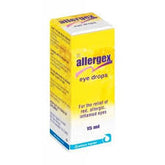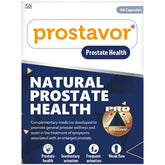Insect bites and stings
Insect bites and stings are common occurrences that can cause discomfort, itching, and in some cases, allergic reactions or transmission of diseases. Understanding the symptoms, treatment options, and prevention strategies for insect bites and stings is essential for managing these incidents effectively and reducing their impact on health and well-being.
Symptoms
The symptoms of insect bites and stings can vary depending on the type of insect and individual sensitivity. Common symptoms include:
- Redness
- Swelling
- Itching or irritation
- Pain or tenderness
- Warmth at the site of the bite or sting
- Raised, hive-like welts or blisters
- In severe cases or allergic reactions: Difficulty breathing, swelling of the face or throat, dizziness, rapid heartbeat, nausea, or vomiting
Treatment
Treatment for insect bites and stings aims to relieve symptoms and prevent complications. Depending on the severity of the reaction, treatment options may include:
-
First Aid:
- Wash the affected area with soap and water to remove any venom or irritants.
- Apply a cold compress or ice pack to reduce swelling and relieve pain.
- Elevate the affected area to reduce swelling, especially if the bite or sting is on an extremity.
-
Over-the-Counter Medications:
- Antihistamines: Oral antihistamines such as diphenhydramine (Benadryl) or loratadine (Claritin) can help relieve itching and reduce allergic reactions.
- Topical corticosteroids: Over-the-counter creams or ointments containing hydrocortisone can help reduce inflammation and itching.
-
Pain Relief:
- Over-the-counter pain relievers such as acetaminophen (Tylenol) or ibuprofen (Advil, Motrin) can help alleviate pain and discomfort.
-
Seek Medical Attention:
- If symptoms are severe, persist for more than a few days, or if there is evidence of infection (such as increasing redness, warmth, or drainage from the site), seek medical attention promptly.
Prevention
Preventing insect bites and stings involves taking precautions to avoid exposure to insects and using protective measures. Key prevention strategies include:
- Use Insect Repellent: Apply insect repellent containing DEET, picaridin, or oil of lemon eucalyptus to exposed skin and clothing when outdoors, especially in areas with high insect activity.
- Wear Protective Clothing: Wear long sleeves, pants, socks, and closed-toe shoes when hiking or spending time in wooded or grassy areas where insects are prevalent.
- Avoid Perfumes and Bright Colors: Avoid wearing scented lotions, perfumes, or brightly colored clothing, as they may attract insects.
- Take Precautions at Dusk and Dawn: Insects such as mosquitoes are most active during dawn and dusk, so take extra precautions during these times.
Common Insects
Some of the most common insects that bite or sting include:
- Mosquitoes: Mosquito bites can cause itching, redness, and swelling. In some regions, mosquitoes can transmit diseases such as malaria, dengue fever, Zika virus, or West Nile virus.
- Bees and Wasps: Bee and wasp stings can cause pain, swelling, and redness at the site of the sting. In individuals with allergies, bee and wasp stings can cause severe allergic reactions, including anaphylaxis.
- Ticks: Tick bites can transmit diseases such as Lyme disease, Rocky Mountain spotted fever, or tick paralysis. Prompt removal of ticks and proper tick bite care are essential to reduce the risk of disease transmission.
- Ants: Some species of ants, such as fire ants, can deliver painful stings that cause itching, redness, and swelling. In some cases, multiple ant stings can lead to severe allergic reactions or anaphylaxis.
Conclusion
Insect bites and stings are common occurrences that can cause discomfort and, in some cases, lead to allergic reactions or transmission of diseases. By understanding the symptoms, treatment options, and prevention strategies for insect bites and stings, individuals can effectively manage these incidents and reduce their impact on health and well-being. Prompt treatment of symptoms, taking preventive measures to avoid exposure to insects, and seeking medical attention when necessary are key steps in preventing complications and promoting a safe outdoor experience.
- Complication of Insect bites and stings
- Diagnosis of Insect bites and stings
- How is Insect bites and stings treated?
- Insect bites and stings
- Insect bites and stings myths
- Medicine for Insect bites and stings
- Remedies for Insect bites and stings
- Support for Insect bites and stings
- Symptoms associated with Insect bites and stings
- The best British Online Pharmacy
- Top 10 UK Pharmacies
- Treatment for Insect bites and stings
- What causes Insect bites and stings
- What is Insect bites and stings
- Where can I buy medicine for Insect bites and stings in the UK
- ZimSeller Pharmacy



















